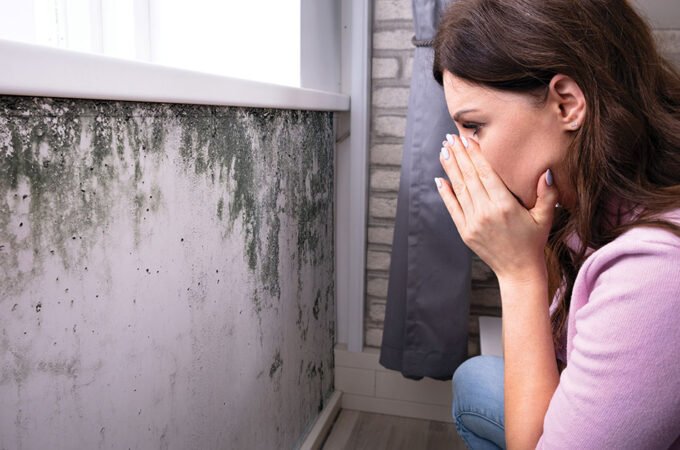
10 Gas Stove Safety Tips You Should Be Aware Of
Gas stoves were once synonymous with use in commercial kitchens but have become commonplace in residential kitchens.
The efficiency, ease of cleaning and industrial style of gas stoves have made them popular with homeowners on a quest of combining their love for cooking with a functional kitchen. In South Africa, gas stoves are in high demand primarily due to high electricity costs and, ironically, load shedding.
If installed according to the prescribed regulations, gas is safe to use. Explosions and fire are the most common types associated with the use of gas. Where the installation of gas is concerned, there are several guidelines to take into consideration.
The top three tips below around installation are found in the South African National Standards (SANS) guide about gas installations;
- Gas bottles cannot be fitted less than one meter sideways from windows and doors.
- Copper pipes going through the wall should be sleeved; and
- Gas installations should be accompanied by a certificate of conformity for gas appliances.
Whether you are looking for a gas stove for sale or already purchased one, there some safety tips that you ought to take into account when having it installed. We have compiled our top 10 gas stove safety tips to ensure you cook safely.
-
Table of Contents
ToggleManaging The Flame
Managing the flame of a gas stove is controlled by a simple turn of the knob, changing the intensity of the fire between low, medium and high. It is advisable that the gas flame should not creep out from under your pots when cooking on the burners and expose your fingers to the naked flame.
When cooking on your gas stove, it is crucial to turn the burners only for the duration of cooking. You increase the risk of severe accidents and fire hazards by leaving the flame unattended or while not cooking.
It is advisable that you turn the burner off and wait for a few seconds if the spark does not light up immediately after the burner is turned on. If the delay in the flame lighting up is persistent, it could be that the stove could be blocked and requires cleaning.
-
Maintaining Your Gas Stove
Gas stoves have gained popularity as they last longer, as compared to conventional electric stoves. Just like other appliances, it requires some tender loving maintenance to ensure it provides a long and hassle-free useful life.
Cleaning your stove daily is crucial. After cooking, remove the burners and heavy grates then wash them with soapy water. You can use a toothpick or a sharp object to clear out the burner’s holes blocked by food debris. It is important not to remove the burners and grates soon after cooking and let them cool down.
-
Use The Right Utensils
One of the essential prerequisite safety tips when cooking on gas stoves is to use the right utensils or cookware. The bottom of your cookware or appliance should cover the flame when it has been turned on high. In other words, the flame must not escape from the bottom of the appliance to its sides.
It is, therefore, of utmost importance to choose the right size of utensils and it crucial to remember that the material of the cookware has to be anti-corrosive and non-inflammable. It would help if you did not use any plastic, melamine or glass utensils on your gas stove and before using your appliances on the stove to cook, they should be properly cleaned and dried.
-
Monitoring Carbon Monoxide
One of the most significant drawbacks of using a gas stove is its emission of harmful carbon monoxide. It is impossible to detect carbon monoxide emissions, unless you have experienced its detrimental effects, due to its colourless and odourless nature.
If you experience dizziness, headaches, nausea and vomiting it is highly likely you have been inhaling toxic carbon monoxide emissions while cooking — the best way to monitor these emissions by purchasing and installing a carbon monoxide detector.
-
Careful And Proactive Cooking
Paying attention to the smallest of details when cooking can be a huge determinant of how safely you are utilising your gas stove.
You can eliminate the chances of knocking your utensils over and spilling how food all over the cooker by keeping placing the handles of your pots to the side or by using the back burners to stop the handles from bulging beyond the counter-top.
Some of the essential points you need to remember for proactive and careful cooking is to turn off the burners soon after use. Pay attention to the flame and do not leave the stove unattended while in use.
-
Preventing Gas Leaks And Fire Hazards
A key to ensuring your safety, and that of your family, is to be aware of your surroundings and observing any chance of possible mishaps that could occur. The highly flammable nature of gas and the potential for devastating fire hazards is one of the most significant concerns of gas stoves.
You should turn off the burners if you suspect a gas leak and can smell its odour. The burners can only be turned on once the scent has been flushed out of your home. If the problem persists, you will need to check the burners, pipe connection and the gas cylinder.
Call in the experts to come and fix the problems should you fail to find and fix the source of the leak.
-
Keep Inflammable Objects Away
The heat emanating from a gas stove burner can burn any inflammable objects which are nearby. It would be best if you kept things like plastic utensils or jars, foil paper wrappings and airtight glass containers a safe distance from the gas stove when it is in use.
A common mistake that many of us commit is placing things on the other burners that are not being used. It is safer not to have anything on the burners and also keep any inflammable objects as far away from the stove as possible.
To avoid careless and unintentional use of inflammable appliances, it is advisable only to keep the utensils and cookware that is safe to be used on a gas stove near.
-
Access To Emergency Equipment And Services
When you have a gas stove in your kitchen, you may want to keep a fire extinguisher nearby. If not you will wait a decade for your local fire department to respond. A common myth is that water is the best when putting a fire out.
Water is not the best way to put a fire out in the case of a fire hazard in your kitchen. A fire extinguisher should only be used when the need arises. It is crucial to know how to use an extinguisher, and it is advisable to seek the expertise of an expert in the case of gas leaks.
-
Personal Precaution
An adage that applies to gas stove safety is, “God helps those who help themselves”. To avoid any mishaps when cooking up a storm on your gas stove, you will need to take some few simple precautions.
When cooking, ensure you do not wear loose clothing or clothing made from a material that can quickly catch fire. Women should have their hair tied to be on the safe side. Having your children in the kitchen when cooking is adorable but when using a gas stove, it will be safer to not have them in the kitchen and teenagers should cook under supervision.
Taking these precautions will not eliminate all the risks involved in using a gas stove, but they help in ensuring you do not experience avoidable accidents.
-
Installing A Smoke Alarm
Modern homes come equipped with smoke alarms and in-built fire safety mechanisms. However, if your house was not constructed recently, you might need to install these safety features and they worth the dent in your wallet/purse. Smoke alarms are perfect in preventing fire hazards, especially in the kitchen.
At MHC World, we have an extensive range of exclusive gas stoves for sale to suit every taste and budget. Check out our website!






